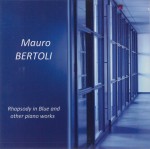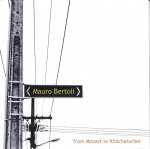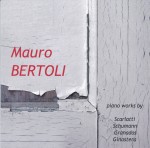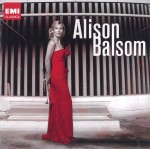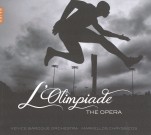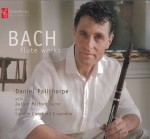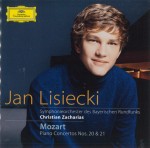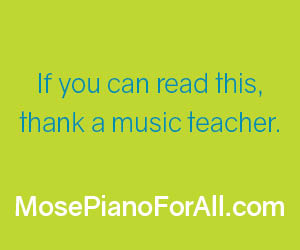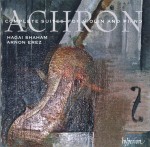 From my reviewing standpoint, I don’t think any CD label has provided as many interesting releases over the past few years as England’s Hyperion Records. The latest release to reach me is a 2-CD set of the Complete Suites for Violin and Piano by Joseph Achron (CDA67841), in simply stunning performances by Hagai Shaham and Arnon Erez. Five of the six Suites are on CD2, recorded in 2009 at the Jerusalem Music Centre in Israel; the Stempenyu Suite and the 17 shorter pieces on CD1 were actually recorded 13 years earlier at the same location, and were previously released on Biddulph (LAW021). There is no discernible difference in the sound quality.
From my reviewing standpoint, I don’t think any CD label has provided as many interesting releases over the past few years as England’s Hyperion Records. The latest release to reach me is a 2-CD set of the Complete Suites for Violin and Piano by Joseph Achron (CDA67841), in simply stunning performances by Hagai Shaham and Arnon Erez. Five of the six Suites are on CD2, recorded in 2009 at the Jerusalem Music Centre in Israel; the Stempenyu Suite and the 17 shorter pieces on CD1 were actually recorded 13 years earlier at the same location, and were previously released on Biddulph (LAW021). There is no discernible difference in the sound quality.
Achron (1886–1943) was a Russian Jewish virtuoso who studied under Leopold Auer in St. Petersburg, as did Milstein, Elman, Zimbalist and Heifetz; the latter is described in the excellent booklet notes by Malcolm Miller as Achron’s “friend and champion.” It’s a fitting connection, for Achron’s compositions — especially the earlier ones — are much in the style of the encore and salon pieces of Kreisler and Heifetz; the Children’s Suite on CD2 is a 1934 arrangement by Heifetz of eight of the 20 pieces in Achron’s original piano suite of the same name. Achron’s brother, incidentally, was Heifetz’s pianist in the US in the early 1920s. To strengthen the connection even more, Shaham’s tone and vibrato are very reminiscent of Heifetz’s own playing. And what playing there is on these two discs! Shaham is not only technically superb, but presents perfect interpretations, never treating the music as just occasional pieces, but never going over the top with the virtuosic aspects either.
What is particularly interesting about the music here is that it presents such an intriguing picture of the musical world through the early years of the 20th century; names mentioned in the notes as influences on Achron include Scriabin, Franck, Ravel, Stravinsky, Bartok, Mahler, Zemlinsky and Bloch. Achron’s style clearly developed as he moved through his life, from his early Russian pieces, through his connection with the Society for Jewish Folk Music in St. Petersburg in 1911, to his later, more chromatic works in Berlin and the US, works which were much admired by Schoenberg.
I simply can’t say enough about Shaham’s playing here — this is truly a violinist’s violinist. Erez is no slouch at the keyboard either, albeit possibly with less virtuosic demands. Surprisingly, much of Achron’s music still remains in manuscript form only, which makes this CD set even more valuable. Achron wrote three violin concertos, premiering the last two of them with the Los Angeles Philharmonic Orchestra during his Hollywood years in the late 1930s; what I wouldn’t give to be able to hear Shaham playing them!
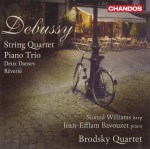 The latest CD from England’s Brodsky Quartet offers beautifully-judged performances of the String Quartet and Piano Trio of Claude Debussy (Chandos CHAN 10717). The quartet was founded 40 years ago, with two of the original members still there, so their faultless ensemble playing should come as no surprise.
The latest CD from England’s Brodsky Quartet offers beautifully-judged performances of the String Quartet and Piano Trio of Claude Debussy (Chandos CHAN 10717). The quartet was founded 40 years ago, with two of the original members still there, so their faultless ensemble playing should come as no surprise.
The String Quartet is a beautiful and idiomatic reading: passionate, nicely coloured and with a wonderful range of tone and dynamics. The Piano Trio is an early work from 1880, when the 18 year old Debussy was employed by Nadejda von Meck, Tchaikovsky’s patroness. Despite its lack of maturity, it’s an interesting piece, with many hints at the composer’s later style, but with a rather weak ending. Jean-Efflam Bavouzet is the perfect pianist for this music, having recorded Debussy’s Complete Works for Solo Piano for the Chandos label. Again, it’s a beautiful performance.
Two shorter works fill out the CD. The Deux Danses (Danses Sacrée et Profane) for chromatic harp and orchestra were written in 1904 as examination pieces for the Brussels Conservatory, after that institution had been persuaded by the Parisian instrument makers Pleyel, the chromatic harp’s inventors, to run courses for the instrument. Welsh harpist Sioned Williams is the excellent soloist in this arrangement for pedal harp and string quintet, with Chris Laurence on double bass.
The closing track is the 1890 piano piece Reverie, arranged for string quartet by the Brodsky’s violist Paul Cassidy. Beautiful string playing throughout, with excellent balance and sound quality, make this a very attractive release.
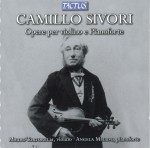 Camillo Sivori (1815-94) was Paganini’s only pupil, and was already touring Europe as a virtuoso violinist by the age of 12. Like most 19th century virtuosi, he wrote works for his own instrument. The Italian label Tactus has issued his Opere per Violino e Pianoforte (TC 811901) in excellent performances by violinist Mauro Tortorelli and pianist Angela Meluso.
Camillo Sivori (1815-94) was Paganini’s only pupil, and was already touring Europe as a virtuoso violinist by the age of 12. Like most 19th century virtuosi, he wrote works for his own instrument. The Italian label Tactus has issued his Opere per Violino e Pianoforte (TC 811901) in excellent performances by violinist Mauro Tortorelli and pianist Angela Meluso.
On first hearing, the seven pieces here are much in the style of Paganini, but Sivori was apparently noted for “advancing and maturing the concept of interpretation,” as the rather awkwardly-translated booklet notes put it, and the works offer a fascinating look at mid-1800s Italian virtuoso playing and composing in the post-Paganini years. Detailed performing and publication histories of the works are included in the booklet.
The playing here is absolutely first-class; it’s never enough simply to get all the notes and technical tricks in this type of music, even if it’s not that deep emotionally – you must also make it smooth and seamless, and apparently effortless, without making it sound like empty virtuosity. Tortorelli gets it stunningly right on all counts. The piano has less to do, but Meluso is a fine and sympathetic accompanist.
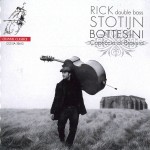 Sivori’s name also turns up on Bottesini – Capriccio di Bravura, a CD of stunning double bass performances by the Dutch bassist Rick Stotijn (Channel Classics CCS SA 32612). Giovanni Bottesini (1821-89) was a brilliant bass virtuoso, and his compositions for the instrument were responsible for the double bass becoming a bona fide solo instrument.
Sivori’s name also turns up on Bottesini – Capriccio di Bravura, a CD of stunning double bass performances by the Dutch bassist Rick Stotijn (Channel Classics CCS SA 32612). Giovanni Bottesini (1821-89) was a brilliant bass virtuoso, and his compositions for the instrument were responsible for the double bass becoming a bona fide solo instrument.
His most frequently heard work is the Gran Duo Concertante in A Major, originally written for two double basses and orchestra, but now played almost exclusively in the arrangement by Camillo Sivori for violin, double bass and orchestra. It is played here in an arrangement by Duncan McTier for the same soloists with string orchestra, with the outstanding Liza Ferschtman on violin and the Amsterdam Sinfonietta under Candida Thompson.
Cellist Monika Leskovar joins Stotijn for the Duo Concertant on Themes from Bellini’s “I Puritani,” also in a string orchestra arrangement, and the CD also features two works for double bass and string quintet: the Grande Allegro di Concerto “alla Mendelssohn,” which seems to rely heavily on the E Minor violin concerto for its inspiration; and the Capriccio di Bravura in A Major.
Stotijn’s sister, mezzo-soprano Christianne Stotijn, joins her brother and pianist Hans Eijsackers in two songs that reflect the composer’s love of – and familiarity with – opera and the bel canto style. Bottesini was a successful opera conductor, having conducted the premiere of Verdi’s Aïda in 1871, and he also wrote several operas of his own. Neither song is particularly Italianate or showy, and the bass beautifully supports the vocal part.
Stotijn’s playing throughout is quite astonishing, although the music itself isn’t always up to his high standards; his tone, vibrato speed, agility and range are truly amazing. At times it’s difficult to tell the violin and bass apart in the Gran Duo, and Stotijn manages to sound more like a cellist in the quintets.
The contributions from members of the Amsterdam Sinfonietta in the chamber works are first-class; there is a lovely resonance to the recorded sound, with the soloists perfectly balanced.
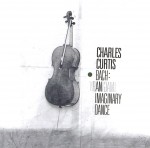 I’m not sure where to start with the new CD from the American cellist Charles Curtis – Bach: An Imaginary Dance (eOne EOM-CD-2127). “An extraordinary new reading of 3 Bach Cello Suites,” says the sticker on the front of the jewel case: “Accompanied by tabla and organ, Charles Curtis opens an alternative dimension of rhythm and color.” Well, maybe.
I’m not sure where to start with the new CD from the American cellist Charles Curtis – Bach: An Imaginary Dance (eOne EOM-CD-2127). “An extraordinary new reading of 3 Bach Cello Suites,” says the sticker on the front of the jewel case: “Accompanied by tabla and organ, Charles Curtis opens an alternative dimension of rhythm and color.” Well, maybe.
First things first. Curtis is a superb cellist. His playing here is smooth and flowing, with no hint of technical difficulty, and with a lovely sense of line that simply bursts with life and energy. I would pay a good deal to hear him perform the complete suites unaccompanied. So how did he end up recording selected cello suites with tabla (Naren Budhakar) and organ (Anthony Burr)?
For a start, he is fully aware of the historical context of the works, of the importance of dance in social life at the time and of Bach’s lack of hesitation in adapting his music to different instrumentations.
But why the Indian instrumental additions? Well, Curtis has studied the Kirana style of Indian classical music, and is a regular member of the Just Alap Raga Ensemble. When he decided to enhance the dance nature of the suites, the organ and tabla must have been immediate options: the tabla clearly supports and embroiders the rhythmic nature of the music, and the organ fills in the harmonic structure implicit in the solo cello lines. It’s a subtle harmonic support, too, with no vibrato and no contrapuntal lines – just a smooth, low-key chordal sound typical of the portable organs used in Indian music.
Now the big question: does it work? The Suites chosen are numbers 1 in G Major, 3 in C Major and 4 in E-flat Major; all have six movements – Prelude, Allemande, Courante, Sarabande, Bourrée or Menuet, and Gigue – and in each case the Prelude and Sarabande (the slow movements) are played unaccompanied. Even in the remaining movements, the tabla and organ are not always present; the degree of participation varies a great deal, whether they are playing singly or together. I tended to find that I would forget about them in the solo cello movements and then wonder why they had returned.
You can argue as much and as long as you like about whether or not this approach provides an ear-opening new way of listening to these works, or whether such additions do nothing but pointlessly compromise the integrity of the original music, but the bottom line for me is that Curtis’ cello playing is so wonderfully full of life, as close to perfection as you can get, that I can’t see how you could possibly need anything else. In many ways the tabla and organ don’t really detract from the music, but they can hardly be said to add anything either; at best, they buzz and hover around it like mosquitoes at an outdoor evening dinner.
“An alternative dimension of rhythm and color?” I don’t really know; I was too busy listening to the cello.
 4 SYMPHONIES:
4 SYMPHONIES:

